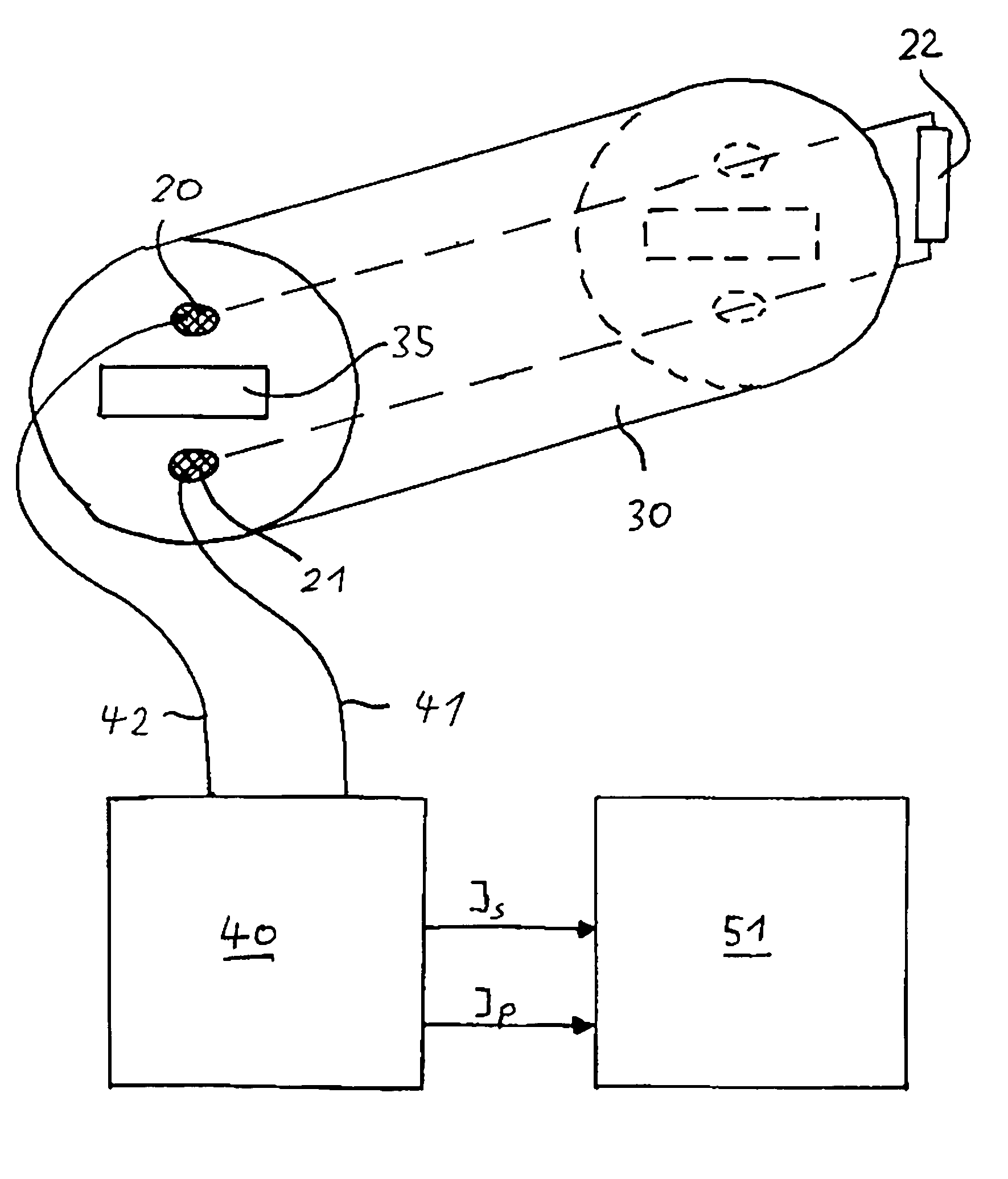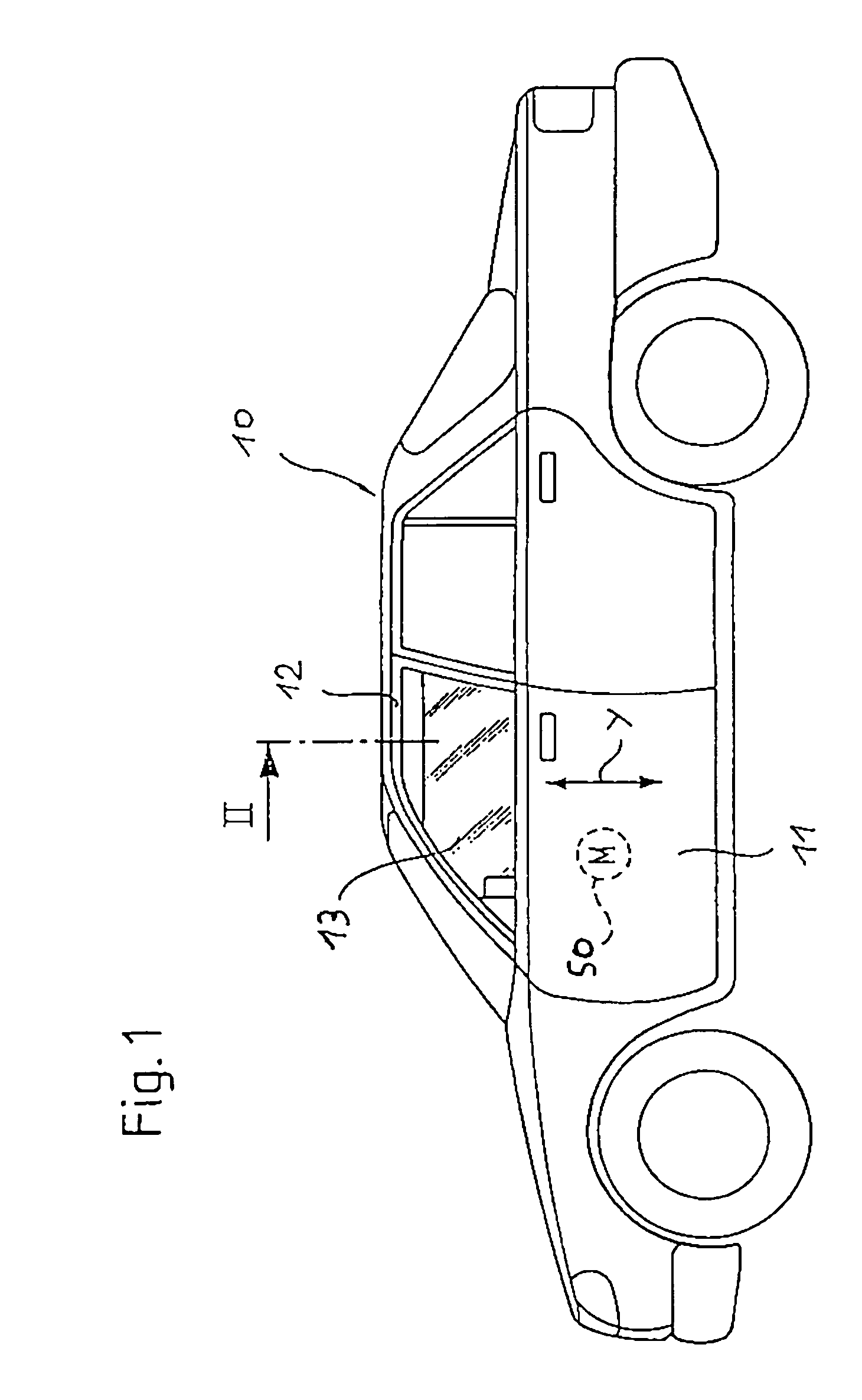Device for detecting an obstacle in the opening range of a movable closure element
- Summary
- Abstract
- Description
- Claims
- Application Information
AI Technical Summary
Benefits of technology
Problems solved by technology
Method used
Image
Examples
Embodiment Construction
[0032]Referring now to FIG. 1 there is illustrated the motor vehicle 10 featuring a window pane 13 powered by an electric motor 50 in the region of a door 11. The window pane 13 representing a closure element is movable in the powering direction y of the electric motor 50 between an open position and a closed position.
[0033]Referring now to FIG. 2 there is illustrated in more detail how the door 11 comprises a frame 12 to which a weatherseal 30 sealing the window pane 13 is secured. The weatherseal 30 made of an electrically non-conductive elastomer, for example, EPDM, comprises a fastening portion 31 defined in a channel 14 of the frame 12. For this purpose the fastening portion 31 is provided with retaining lips 32 producing a non-positive connection with the walls of the channel 14. The weatherseal 30 is provided furthermore with sealing lips 33, 34 which sealingly guide the window pane 13. In this arrangement the sealing lip 33 is in contact with a side surface of the window pan...
PUM
 Login to View More
Login to View More Abstract
Description
Claims
Application Information
 Login to View More
Login to View More - R&D
- Intellectual Property
- Life Sciences
- Materials
- Tech Scout
- Unparalleled Data Quality
- Higher Quality Content
- 60% Fewer Hallucinations
Browse by: Latest US Patents, China's latest patents, Technical Efficacy Thesaurus, Application Domain, Technology Topic, Popular Technical Reports.
© 2025 PatSnap. All rights reserved.Legal|Privacy policy|Modern Slavery Act Transparency Statement|Sitemap|About US| Contact US: help@patsnap.com



